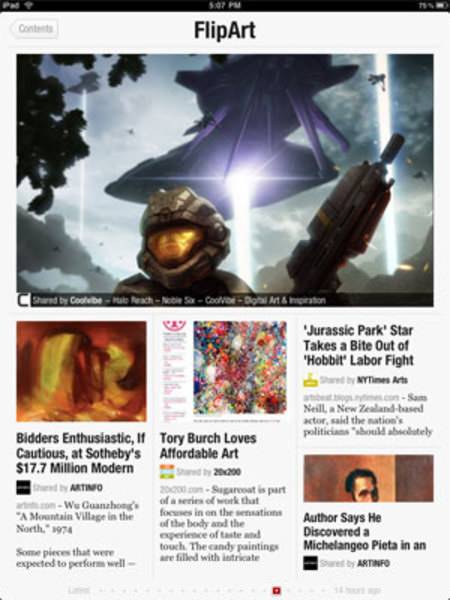Yesterday we looked at the latest “social magazine” app to hit the iPad, called NewsMix. It’s very similar to Flipboard, the innovator and leader in this small but rapidly evolving market. Social magazines is a term that Flipboard came up with. It’s come to mean a News Reader type application for the iPad that has the visual appeal of a magazine, along with the social media features common to this era of the Web (integration with Facebook, Twitter and other social apps). Social magazine apps will become a key application for tablets over the next couple of years. Also we will see existing magazines on the iPad, such as Wired and TIME, evolve to become more like Flipboard – with better customization of magazine sections, whizzier UI, more social media functionality, and so on.

An important question for Flipboard, NewsMix and other such apps is: how will they make money? Wired, TIME and other specialist magazines will rely on the subscription model (once it gets sorted out for the iPad). However, Flipboard and its ilk face the same issues with monetization as RSS Readers did in the previous Web era.
Tough to Monetize
A big part of the reason why the consumer RSS Reader market never took off was that it was almost impossible to monetize. Users balked at ads inside their RSS Readers, so the main RSS Reader companies ended up turning to the enterprise market for the bulk of their revenues. Newsgator is a great example. It owns a range of sophisticated RSS Reader products, but it shuttered its browser-based RSS Reader in mid-2009 and now appears to focus mostly on SharePoint integration (i.e. the enterprise market).
Flipboard and other social magazines can of course choose to make money by being a paid app in iPad and other app stores. NewsMix has headed in this direction, charging $2.99 for its app. Flipboard has chosen to remain free, a sensible move given that it wants to maintain its first mover advantage and ramp up its user numbers.

Likewise, if the App Store ever allows iPad magazine apps to provide a decent subscription service, Flipboard would be wise to hold off on that too. Not just because publishers will probably complain, but again it’s an impediment to user growth – which is surely Flipboard’s primary concern, given that it has defined a new market.
Flipboard’s Plan For Adverts
Flipboard co-founder and CEO Mike McCue told Robert Scoble when Flipboard launched in July last year that they were planning a “new, design-centric, advertising that could possibly fill a page or a portion of a page.” That same month, McCue told Business Insider that “when we build our business model […] it’s not going to be on the backs of the publishers, it will be with the publishers.” He went on to say that Flipboard plans to introduce “a totally new form of advertising.”
It’s clear that Flipboard is looking at (or at least talking about) a predominantly advertising based revenue model, much like traditional magazines have. It thinks that the visual appeal of advertising that magazines have enjoyed, will translate to its product too. The contentious issue will be how it gives a cut to publishers, since – unlike Wired and TIME – Flipboard is not a publisher.
That’s essentially the same problem that RSS Reader Bloglines grappled with in 2004-05. Bloglines didn’t launch advertising at that time, due to the outcry from publishers. Flipboard hasn’t yet broached the subject with publishers – and there’s no rush. Flipboard bought itself some time to figure out a solution, by taking $10.5 million in initial funding.
If Flipboard is serious about this new form of advertising, then it’s a tall order. Any publisher that is even moderately successful relies heavily on brand advertising. Many publishers will be skeptical of a profit-sharing arrangement outside of their own sites.
Acquisition May Be Flipboard’s Answer
Flipboard was the first mover in the social magazine space, so the reality is that it’s going to be an attractive target for acquisition – much as Bloglines was, Flickr was, Delicious was, and so on. My bet is that Flipboard continues to ramp up its user base, with scant regard to business model.
It may still experiment with a new form of publisher-friendly, design focused advertising. But it will be a risky experiment. Nobody has yet figured out how to share advertising revenues with publishers from within a news reader-type application.
Let us know your thoughts in the comments on how social magazines will make money.










